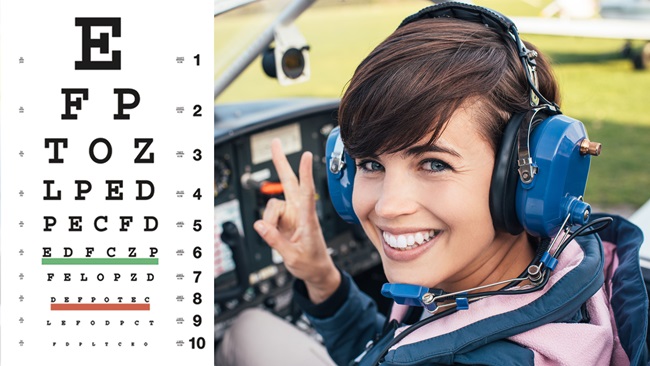Speed demon
Jet pilot pushes the envelope of piston speed

Rankin worked for Globe Swift before moving to the Convair B–58 Hustler bomber and then the McDonnell Douglas/General Dynamics A–12 Avenger, a flying-wing attack aircraft that never flew. Rankin also made radio-controlled scale model racing aircraft, including several based on the Polen Special.
“The new one will be a piston engine, but with a big engine—a six-cylinder turbocharged, intercooled 300- or 350-horsepower,” Keyt said. “I hate to throw numbers out there because all this is calculated, but right now the calculated speed with 350 horsepower is 350 miles an hour, and that’s at sea level. If we took it up to altitude I think it would push 400.” That’s 347 knots of speed from a piston-engine airplane.
When will it fly? No one knows. Keyt is running the Ryan Machine Company from his home, delivering specialized tools for general aviation aircraft. He is located at the Pecan Plantation fly-in community southwest of Fort Worth, Texas. If he built it alone and worked 2,000 hours a year on the RD400, it would take seven and a half years to complete, but he has help. At the moment the effort is to simply get the design out of Rankin’s old computer into more modern software.
What will it cost? Too much, estimates Keyt, to ever be placed on the market. While the cost and time to the first flight are unknown, there is no doubt about the project’s main goal—to reduce drag.
“It will be a much, much lower-drag design than any of the current airplanes. That sounds like a braggadocio thing to say, but you look at all the airplanes that are doing well [in the Sport Class] out at Reno right now and they’re almost all side-by-side airplanes—and that’s a high-drag configuration,” Keyt said. “They have the cockpits over the wing spar, which generates another high-drag situation, and that’s the windshield beginning about where the leading edge of the wing is on the longitudinal axis. That creates high drag. So our windshield is further aft.”
So the RD400 will race at the National Championship Air Races in Reno, right? That’s not in the cards, either. It will establish its record in air free of competitors, and then head for EAA AirVenture at Oshkosh. Perhaps three of them could appear in one year.
Where does that leave the record-setting Polen? Dennis Polen, Darryl Usher, and Jim Hergert designed the Polen Special in 1967. It created a sensation at EAA AirVenture in 1976 but was never available as a kit airplane. Keyt bought the Polen Special in 1998 and began years of modifications. There were plans to make a follow-on Polen Special. A business partner came up with a design that had stubby wings, like the space shuttle, but was electrically powered. There wouldn’t have been enough power for such stubby wings, Keyt said, and the plan ended on the drawing board.
The aircraft has placed first in its class every year that it raced in the AirVenture Cup Race—more than a dozen times—first against competitors, and then alone in its own special class after competitors complained. But Polen and Keyt are the only two pilots to have ever flown the single-seat aircraft, designed by marrying the front half of a Piper Twin Comanche with the back half of a Midget Mustang. That’s because it’s a beast to fly.
“The Polen has quirky flying qualities. It’s really, really difficult to fly,” Keyt said.
“In 2014 I had three forced landings on the way to the race. I finally threw in the towel and left the airplane in Kansas,” Keyt said. “We fixed it and brought it back, and now we are restoring it. If I had done an off-airport landing, the airplane would be demolished. I was able to put it on an airport every time. I was fortunate.” He said he’s had 19 incidents with the airplane (see “Polen Gremlins”).
It’s not unusual that when an airplane tries to kill you 19 times, you begin to resent it. Keyt stopped racing the Polen Special.
“Basically, I lost the drive that I had to campaign that airplane,” Keyt said. One of the factors was Lee Behel’s fatal accident in September 2014. He crashed at Reno a couple of months after Keyt’s last forced landing on the way to the AirVenture Cup Race. “He was flying a similar airplane, a one-of-a-kind homebuilt airplane. He was pushing it, trying to set records with it, race it at Reno, and it came apart on him.” Keyt said the other factor was Alan Crawford’s October 2014 accident. Crawford raced a Lancair Legacy that caught fire following an engine problem on the way home from Reno and was destroyed in a forced landing.
The Polen Special is in pieces for restoration prior to going on exhibit at the EAA AirVenture Museum. It may not even fly to the museum, given its troubled record as a possessed airplane in need of an exorcist.
It might appear that Keyt has more time now, but the machine shop, named after his son, keeps him busy. If it didn’t, his Dennis Polen Educational Foundation would fill his days. Each summer he spends a couple of months showing college students how their freshman engineering classes can be put to practical use in the shop. One of his foundation graduates was Joe Coraggio, known then as Joey, who is now flying for American. Coraggio, also nicknamed Garaggio for his sophisticated aircraft workshop at his home, may one day fly his own RD400 with Keyt and Jeff Lange. Start checking the AirVenture schedule in about five years.
Alton K. Marsh is a freelance writer. He is an airline transport pilot with 2,900 hours.



